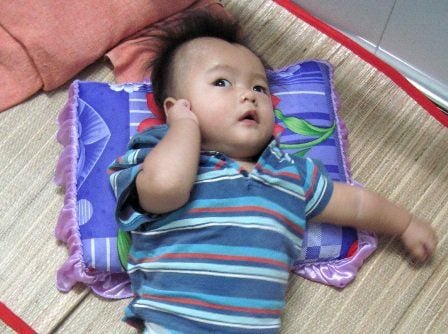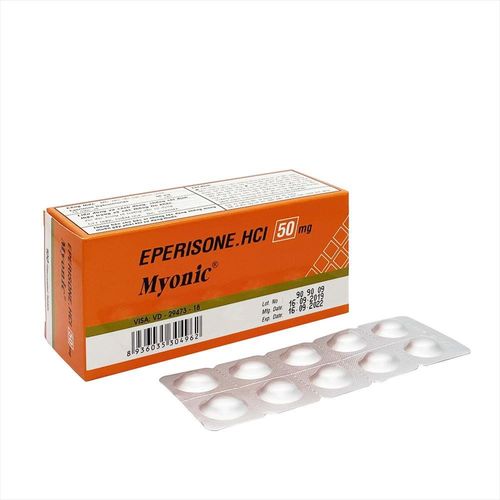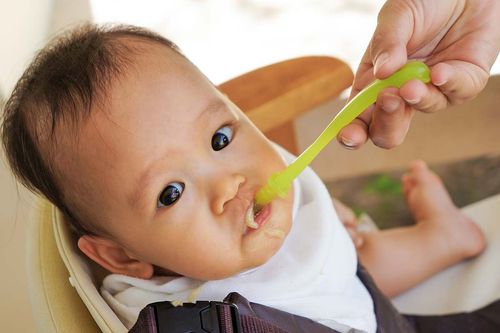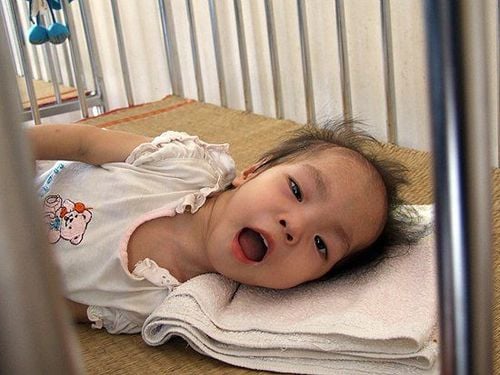This is an automatically translated article.
The article is written by Master, Doctor Vu Duy Chinh - High-tech Unit for Treatment of Cerebral Palsy and Autism - Vinmec Times City International HospitalCerebral palsy is a term that refers to a group of medical conditions that do not progress over time, caused by causes before birth, during and after birth until less than 5 years of age, causing multiple motor and mental disabilities. Mental, sensory and behavioral...
Cerebral palsy not only has severe consequences for the children themselves, their families, but also affects economic and social development. Here are the causes and signs of children with cerebral palsy
1. Causes of cerebral palsy
1.1. Causes before birth
Infections and other diseases during pregnancyInfections in pregnant women such as rubella (German measles), viruses during the first 3 months of pregnancy can damage the brain of the fetus and cause fetal harm. later cerebral palsy. Other infections such as amniotic fluid infection, urinary tract infection - genitourinary system, diabetes, pregnancy toxicity... of the mother can also cause premature birth, another risk of cerebral palsy.
Fetal brain hypoxia
When placental function is impaired (placental failure) or detached from the uterine wall before birth (placental abruption) or due to bleeding can reduce oxygen supply to fetus.
Other congenital abnormalities
Children with structural nervous system abnormalities, many other genetic diseases also increase the risk of cerebral palsy.
1.2. Causes during childbirth
Premature birth
Preterm birth is a baby born before 37 weeks of gestation counting from the first day of the last menstrual period before becoming pregnant. Babies born prematurely, especially before 32 weeks and especially before 28 weeks of gestation, have a very high risk of cerebral palsy.
Asphyxia during labor and birth
Until recently it was widely believed that asphyxia (lack of oxygen) during labor and delivery was the cause of most cases of cerebral palsy.
Obstetric trauma
Obstetric traumas are especially difficult births requiring the use of supportive measures.
1.3. Causes after giving birth
Brain haemorrhage
Cerebral hemorrhage in neonates and infants due to vitamin K deficiency is a common disease in developing countries that, if not treated well, can easily cause sequelae of cerebral palsy
Jaundice
Yellow Neonatal skin is caused by an elevation of the pigment bilirubin produced by the destruction of red blood cells and immature liver function in the newborn. In severe cases, this pigment can cross the vascular-brain barrier and deposit mainly in the basal nuclei of the brain (hence the name nuclear jaundice) and damage these structures causing paralysis. Brain.
Acquired cerebral palsy
Children suffering from diseases that cause neurological damage in the first years of life, such as meningitis, encephalitis, traumatic brain injury...
Cerebral palsy of unknown cause
According to statistical studies, up to 30% of children with cerebral palsy have no known cause.
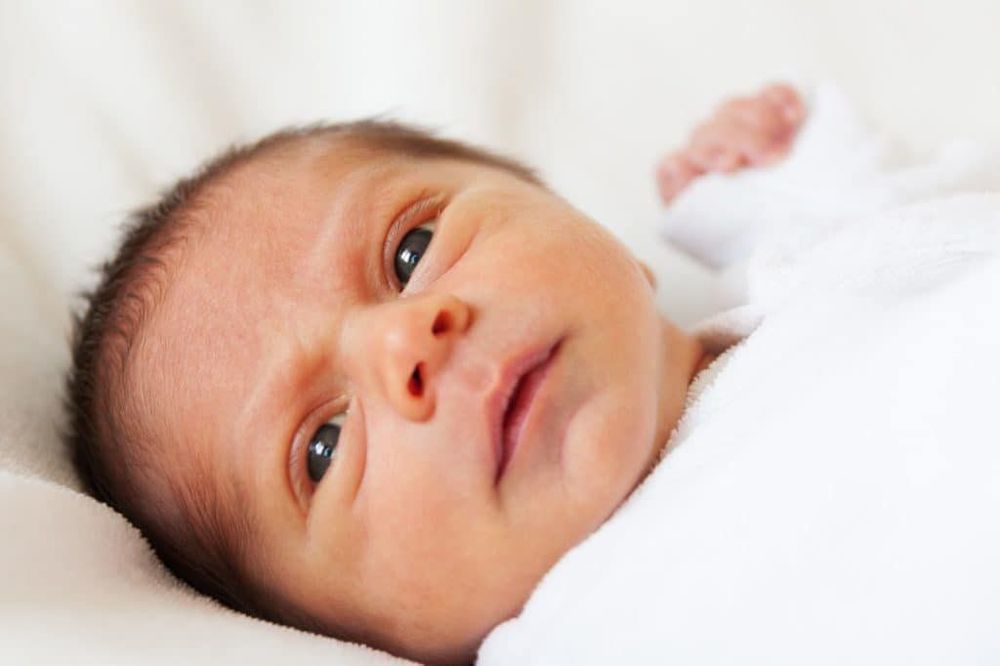
2. Classification of cerebral palsy
Clinical classificationBased on the clinical characteristics of patients with cerebral palsy, they are divided into the following types of cerebral palsy:
Spasticity Body dancing ataxia (loss of coordination) Palpitation (hypotonicity) Strength) Combined body: is a combination of 2 or more forms, usually children have cerebral palsy with a combination of spasticity and gait Classified by location of paralysis
Cerebral palsy, quadriplegia, cerebral palsy 2 Lower extremities Cerebral palsy Hemiplegia Cerebral palsy of 2 hands Cerebral palsy of 3 extremities Graded by severity
Mild cerebral palsy Moderate severe Cerebral palsy Severe cerebral palsy
3. Early detection signs
Children with cerebral palsy can be detected early through the following signs:
When born, they do not cry right away or cry weakly and purple. After giving birth, they are usually soft and do not move. Head drooping, unable to lift. It is difficult to hold, wash, and change clothes for children because young people are stiff. Convulsions: Unconsciousness, foaming at the mouth Slow to hold head and neck, slow to roll, sit, crawl... Has a disability in using hands in grasping and performing activities. Failure to recognize mother or loved ones, delayed early communication skills. Do not turn your head to respond to sounds, toys with colors, do not look at the face of your mother or loved one. Doesn't know how to chat, show affection, doesn't turn to sound. No facial expressions, no eyes to show pleasure. Sucking, difficulty sucking, or choking on milk. Or drooling, wheezing, increased secretion of nasopharyngeal secretions... There are disturbances of superficial sensations such as heat, cold, pain. Other manifestations: Cross-eyed, drooping eyelids, decrease, loss of vision, hearing loss, mouth distortion...
4. Treatment of cerebral palsy
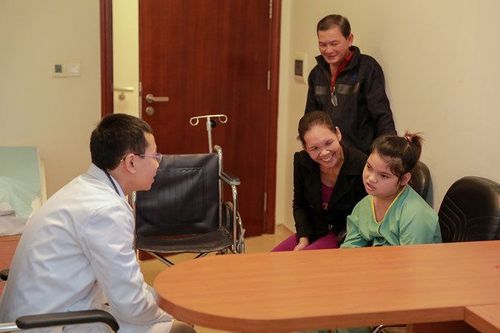
Prof. Dr. Nguyen Thanh Liem, Director of the Institute of Stem Cell Research and Gene Technology - Vinmec International General Hospital is the person who directly researched and successfully applied stem cell therapy in the treatment of cerebral palsy in Vietnam. . Depending on the type of cerebral palsy, 70-80% of patients after transplantation have improved motor function, significantly reduced muscle tone, increased muscle strength, better coordination in activities, increased sensitivity. appetite and weight gain, improved concentration skills, better memory.
Vinmec International General Hospital has applied stem cell method to successfully treat many cases of cerebral palsy that seemed hopeless. The whole process of stem cell transplantation for cerebral palsy at Vinmec is performed very closely, ensuring safety in accordance with international standards. All surgeries are performed by leading experts and doctors with modern machinery and medical equipment. In addition, Vinmec has also developed a standard transplant procedure so that it can share experiences with colleagues, creating more opportunities for treatment for children with cerebral palsy across the country.
Please dial HOTLINE for more information or register for an appointment HERE. Download MyVinmec app to make appointments faster and to manage your bookings easily.





